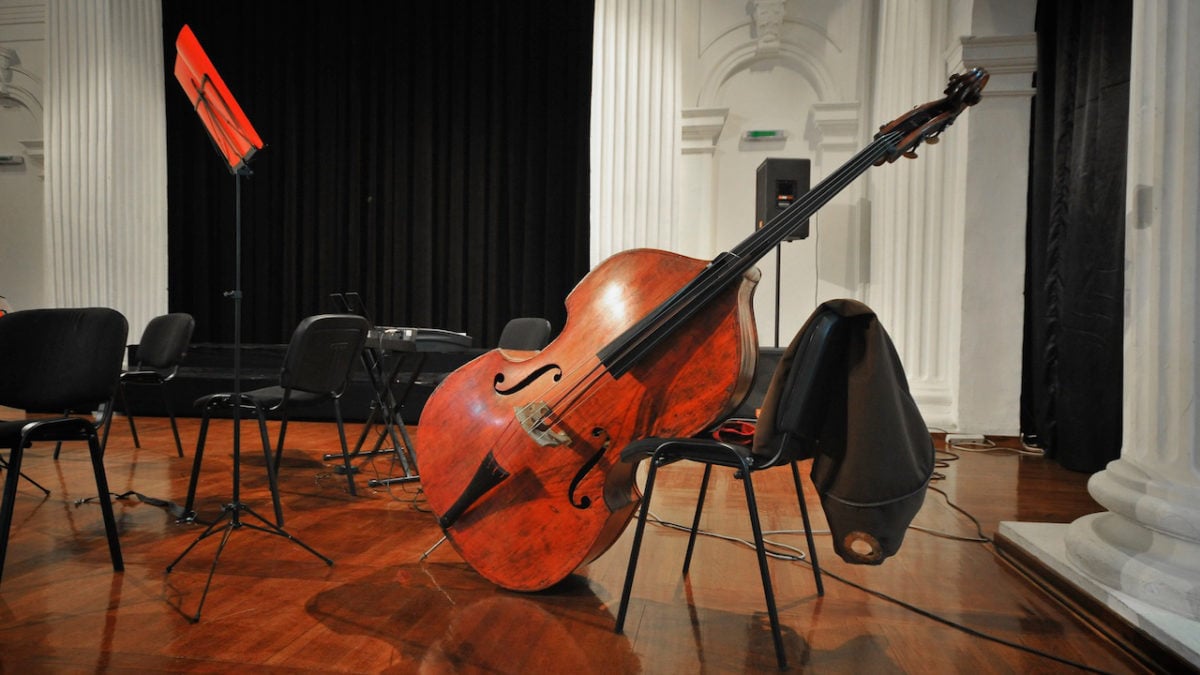Recording Bass: Upright Bass For Classical and Rock Music

Thanks everyone for the feedback on the columns here on No Treble!
I’ve had a few emails asking for advice on recording an upright. I’ve been fortunate to be involved in many upright bass recording sessions. I record an upright slightly different whether it’s part of a classical ensemble or if it’s going to be used within a rock/pop mix.
Whether it’s used in a classical piece or a slamming rock mix, I start with the recording very similar. I always use an AKG C12 on an upright bass. There are other microphones that would do a similar thing, but that is what I use. You’re looking for a large capsule condenser with some high-frequency presence. The best place I’ve found to put the microphone is right off where the player’s fingers are. You can do this by having them play the song a little bit. Look where they’re are plucking the strings with their index finger or 2 fingers. I then place the C12 so it is parallel to the fret board and about 6 inches off the fret board. This will always give you a very natural but even distribution of frequencies.
If you’re recording this upright in a classical piece then the upright is providing a lot of the fundamental low end. For that reason, I’ll use a mic preamp with some good low end. My top contenders are always our Neves or Chandler pre amps. For a classical recording, I try to keep my compression to a minimum. So for that reason, I’m going directly from the preamp into Pro Tools. You can even out the dynamics later with fader rides and automation.
If you’re putting this upright in a rock/pop mix, then I’ll record it slightly differently. I’ll still use the C12 microphone technique above. However, in a rock/pop mix, the upright bass isn’t providing the fundamental low end like in a classical piece. The kick drum and bass guitar will still be doing that. So in this case, I’ll use a preamp with a little more midrange dirt to it. Such as an API. Being it’s going to be a part of fairly compressed mix, I’ll get the dynamics in check also. From the API, I’ll patch it into a Manley Vari Mu compressor. Vari Mu’s are excellent bass compressors. That holds true for uprights also.
The last thing I’ll do before hitting the recorder is roll off the low end at around 90Hz. We still want the kick and bass guitar to be the major contributor to the deep low end. If we continue to add sources to that, we’ll end up with more phase issues and a muddier mix. We can solve this right away by filtering the upright at around 90Hz.
I hope these techniques will help you with your next upright recordings!



